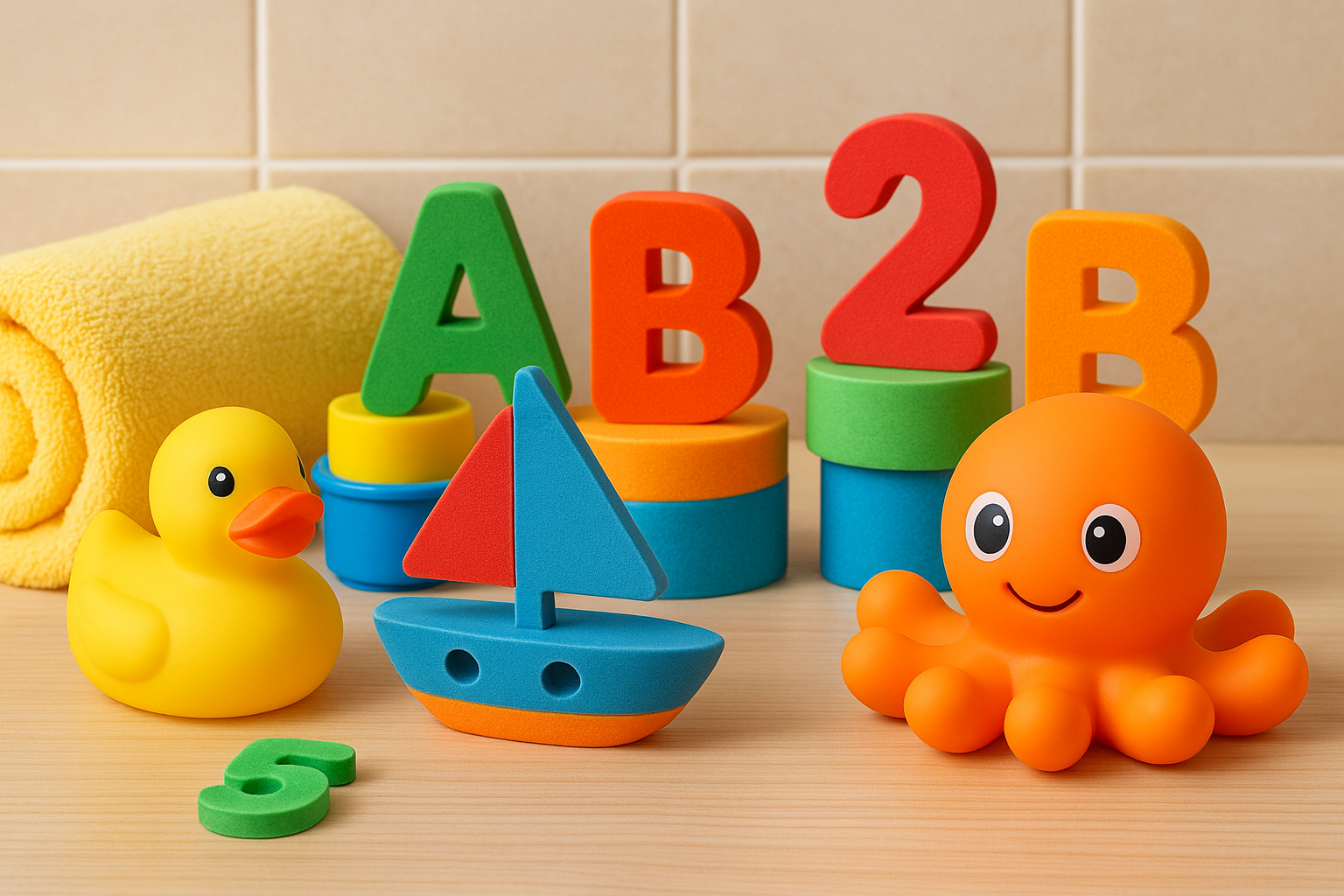Bath time can be one of the most joyful parts of a child’s day — full of splashes, giggles, and bonding. But it can also be stressful when kids resist, get nervous around water, or when parents worry about safety.
This article provides practical, non-medical tips for making bath time both safe and fun for young children.
Focus on Safety First
Key Bath Safety Tips:
- Never leave a child unattended in the bath — even for a few seconds.
- Keep water depth shallow: 2-4 inches (5-10 cm) for babies and toddlers.
- Check water temperature: warm but not hot (about 37-38°C / 98-100°F).
- Use a non-slip mat inside the tub and on the floor.
- Keep all bath items (soap, shampoo, toys) within arm’s reach.
Create a Routine
- Bath time feels safer when it’s part of a predictable routine (before bedtime, after dinner, or when returning from outdoor play).
- Let your child know bath time is coming: “After dinner, we’ll take a bath and read a story.”
Turn Bath Time Into Play Time
Add Fun Elements:
- Foam letters and numbers
- Floating animals, boats, or cups
- Bubble bath (mild, child-safe formula)
- Pouring cups, funnels, or water wheels
- Bath crayons (washable) for drawing on the tiles or tub walls
Sing Songs and Tell Stories
- Use familiar songs like “Row, Row, Row Your Boat”, or make up silly songs about bath time.
- Create imaginary play: “Let’s pretend your rubber duck is going on an adventure.”
Offer Choices to Empower Kids
- “Do you want the yellow towel or the blue one?”
- “Should we wash your hair first or your arms first?”
- Giving small choices helps reduce resistance and increase cooperation.
Manage Hair Washing Struggles
- Use a rinse cup with a soft spout or a bath visor to keep water out of eyes.
- Let kids hold a washcloth over their face if they’re sensitive to water.
- Offer praise after hair washing: “You were so brave!”
Make the Bathroom Comfortable
- Warm the bathroom before starting the bath.
- Have towels and pajamas ready nearby to avoid chills afterward.
Involve Siblings (If Appropriate)
- Bathing siblings together can be fun if space and supervision allow.
- Teach them to play gently and take turns with toys.
Watch for Signs of Tiredness
- If your child is overtired, bath time can feel overwhelming.
- Keep it short and soothing on those days — skip the play and focus on winding down.
Teach Hygiene Through Play
- Encourage washing their own body: “Can you wash your belly?”
- Turn soap bubbles into pretend beards or hats.
- Celebrate independence: “Great job washing your feet!”
End with Calm and Comfort
- Finish with a warm towel, cuddles, and perhaps a calming lotion or massage.
- Pair bath time with the next part of the bedtime routine (storytime, cuddles, lullabies).
Final Thoughts: Bath Time Builds Bonding and Confidence
Bath time isn’t just about getting clean — it’s about creating moments of connection, laughter, and learning. With the right mix of safety, routine, and fun, bath time becomes something your child looks forward to every day.
When you approach it with patience and creativity, even the most reluctant bathers can learn to love the water — and the special time spent with you.
